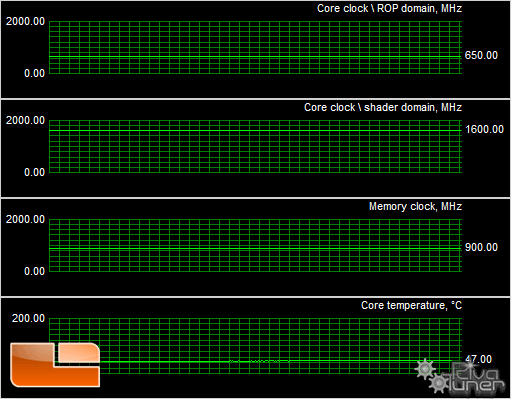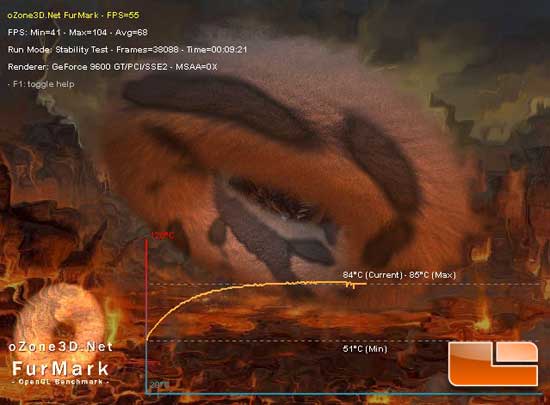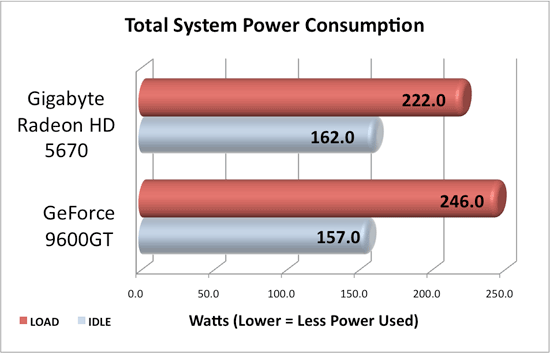Gigabyte Radeon HD 5670 1GB Video Card Review
By
Temperature & Power Consumption
Since video card temperatures and the heat generated by
next-generation cards have become an area of concern among enthusiasts
and gamers, we want to take a closer look at how the Radeon HD 5670
series does at idle and under a full load.
next-generation cards have become an area of concern among enthusiasts
and gamers, we want to take a closer look at how the Radeon HD 5670
series does at idle and under a full load.
Gigabyte Radeon HD 5670 Idle Temperature

At idle, the Gigabyte Radeon HD 5670 had a temperature of 47C.
Gigabyte Radeon HD 5670 Load
Temperature
Temperature

We fired up FurMark and ran the stability at 640×480, which was
enough to put the GPU at 100% load in order to get the highest load
temperature possible. This application also charted the temperature
results so you can see how the temperature rises and levels off, which
is very nice. At load, the Gigabyte Radeon HD 5670 soared up to 85c, which is higher than the temps we saw on our review of two other Radeon HD 5670 cards. Of course, temps are certainly based on the environment and will vary for everyone.
enough to put the GPU at 100% load in order to get the highest load
temperature possible. This application also charted the temperature
results so you can see how the temperature rises and levels off, which
is very nice. At load, the Gigabyte Radeon HD 5670 soared up to 85c, which is higher than the temps we saw on our review of two other Radeon HD 5670 cards. Of course, temps are certainly based on the environment and will vary for everyone.
For testing power consumption, we took our test system and plugged
it into a P3 Kill A Watt EZ Electricity Usage Monitor. For idle numbers, we allowed the system
to idle on the desktop for 15 minutes and took the reading. For load
numbers we measured the peak wattage used by the system while running
the OpenGL benchmark FurMark 1.7.0 at 1920×1200 resolution.

Power Consumption Results: At idle we found that the Gigabyte Radeon HD 5670 used 5 watts more power than that of the 2 year old GeForce 9600GT. Once we loaded things up though, the Gigabyte card actually consumed 11% less watts than the 9600GT. Certainly, it is a good thing to see more graphics capability from a card that consumes less power doing it.

Comments are closed.